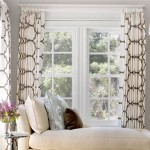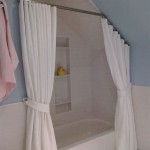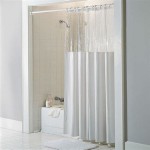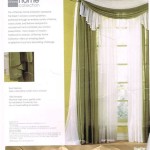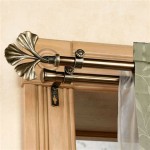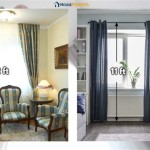Curtain Blinds for Sliding Doors: A Comprehensive Guide
Sliding doors offer a seamless transition between indoor and outdoor spaces, providing ample natural light and convenient access to patios, decks, or gardens. However, effectively managing light, privacy, and insulation through these large expanses can present a unique challenge. Curtain blinds, a hybrid solution combining the aesthetic appeal of curtains with the functional control of blinds, have emerged as a popular and versatile option for dressing sliding doors. This article explores the various types of curtain blinds suitable for sliding doors, their advantages, factors to consider during selection, and installation considerations.
Types of Curtain Blinds for Sliding Doors
The term "curtain blinds" encompasses a range of window treatments that blend the characteristics of both curtains and blinds. The specific types best suited for sliding doors often fall into these categories:
Vertical Blinds: Perhaps the most traditional choice for sliding doors, vertical blinds consist of individual vanes suspended vertically from a track. These vanes can be rotated to control the amount of light entering the room and can be drawn completely aside for unobstructed access. Vertical blinds are available in a variety of materials, including vinyl, fabric, wood, and aluminum. Vinyl vertical blinds are a cost-effective and durable option, while fabric offers a softer aesthetic. Wood offers a more sophisticated look, but requires more maintenance. Aluminum is a more modern and durable alternative.
Panel Track Blinds: Also known as sliding panel blinds or sliding panels, these consist of wide, flat panels of fabric that slide horizontally along a track. When open, the panels stack neatly to one side, maximizing the view. When closed, the panels overlap slightly to provide complete privacy and light control. Panel track blinds are a stylish and contemporary option that can complement a variety of décor styles. They are available in a wide range of fabrics, colors, and textures, allowing for customization to suit individual preferences.
Sheer Vertical Blinds (Silhouette Blinds): These blinds feature fabric vanes suspended between two sheer fabric facings. This design creates a soft, diffused light effect while still providing privacy. The vanes can be tilted open or closed to control the amount of light entering the room. Sheer vertical blinds offer a sophisticated and elegant look, softening the harsh light and are typically more expensive than standard vertical blinds.
Pleated Shades: While typically associated with standard windows, pleated shades can also be used on sliding doors, particularly in a vertical configuration. These shades are made of a pleated fabric that folds up neatly when raised and expands when lowered. Pleated shades offer a simple and clean look and are available in a variety of fabrics, colors, and opacities. They can be a cost-effective option for adding privacy and light control to sliding doors, however, their light blocking capabilities are generally lower than other options.
Roman Shades: Similar to pleated shades, Roman shades utilize fabric that folds or stacks when raised. They offer a more tailored and sophisticated look compared to pleated shades. While not as common, custom Roman shades can be designed for wider sliding doors, creating a luxurious and elegant window treatment. This option typically requires professional installation and is most suitable for doors that aren't used frequently.
Advantages of Using Curtain Blinds for Sliding Doors
Choosing curtain blinds for sliding doors presents several compelling advantages:
Light Control: Curtain blinds provide precise control over the amount of light entering the room. Whether maximizing natural light during the day or creating a darkened environment for sleep or media viewing, curtain blinds offer adjustable light filtering options. The ability to tilt vanes or adjust panel positions allows for fine-tuned control over the light entering the space, reducing glare and protecting furniture from UV damage.
Privacy: Maintaining privacy while still enjoying natural light is a key consideration for many homeowners. Curtain blinds offer varying degrees of privacy, from sheer fabrics that allow diffused light to enter to opaque materials that block all visibility. The ability to adjust the blinds to different angles allows for privacy control without completely sacrificing natural light during the day.
Insulation: Energy efficiency is a significant concern for many homeowners. Curtain blinds can help to improve insulation by reducing heat transfer through the sliding door. Certain materials, such as cellular shades and insulated vertical blinds, offer enhanced insulation properties, helping to keep the room cooler in the summer and warmer in the winter. This can lead to reduced energy consumption and lower utility bills.
Aesthetic Appeal: Curtain blinds can enhance the aesthetic appeal of a room, adding texture, color, and style. With a wide range of materials, colors, and patterns available, curtain blinds can be customized to complement any décor style. The combination of fabric and slats or panels creates a unique visual effect that can add depth and dimension to the space. They offer a softer alternative to harsh blinds while still offering the same control over light and privacy.
Ease of Use: Most curtain blinds are easy to operate, with simple mechanisms for opening, closing, and adjusting the slats or panels. Many options are available with motorized controls, allowing for remote operation and added convenience. This is especially beneficial for large or hard-to-reach sliding doors.
Factors to Consider When Selecting Curtain Blinds
Choosing the right curtain blinds for sliding doors requires careful consideration of several factors:
Door Size: The size of the sliding door is a primary consideration. Larger doors will require wider blinds or multiple panels to ensure adequate coverage. Accurate measurements are essential to ensure a proper fit and optimal functionality. Consider the weight of the blinds when fully extended, especially for very wide doors.
Material: The material of the curtain blinds will affect their appearance, durability, and functionality. Fabric blinds offer a softer look and are available in a wide range of colors and patterns. Vinyl blinds are durable and easy to clean but may not be as aesthetically pleasing. Wood blinds offer a sophisticated look but require more maintenance. Consider the level of light blocking and insulation needed when selecting the material.
Light Control Needs: The desired level of light control is an important factor. If complete blackout is required, opaque fabrics or materials with blackout linings are necessary. If diffused light is preferred, sheer or light-filtering fabrics are a better choice. Consider the direction the sliding door faces and the amount of sunlight it receives throughout the day.
Privacy Requirements: The level of privacy required will also influence the choice of curtain blinds. Opaque materials offer the most privacy, while sheer fabrics offer minimal privacy. Adjustable slats or panels allow for customized privacy control. Consider the proximity of neighboring buildings or passersby when assessing privacy needs.
Operating Mechanism: The operating mechanism should be easy to use and reliable. Cordless options are safer for homes with children and pets. Motorized options offer added convenience and can be controlled remotely. Ensure the operating mechanism is compatible with the size and weight of the blinds.
Style and Décor: The curtain blinds should complement the existing style and décor of the room. Consider the color, pattern, and texture of the blinds in relation to the other furnishings and architectural elements. Choose a style that reflects personal preferences and enhances the overall aesthetic of the space.
Budget: Curtain blinds are available in a wide range of prices. Determine a budget beforehand and choose blinds that offer the best value for money. Consider the long-term cost of ownership, including maintenance and energy savings.
Maintenance: Different materials require different levels of maintenance. Choose a material that is easy to clean and maintain to ensure long-term durability and appearance. Consider the amount of dust and dirt that accumulates in the area and choose a material that can withstand regular cleaning.
Installation Considerations
Proper installation is crucial for ensuring the functionality and longevity of curtain blinds. Here are some key considerations:
Professional vs. DIY Installation: Depending on the type of curtain blinds and the level of DIY experience, installation can be done either professionally or as a DIY project. Professional installation ensures accurate measurements, proper mounting, and optimal functionality. DIY installation can save money but requires careful planning and attention to detail. For panel tracks and heavier blind styles, professional installation is generally recommended.
Mounting Options: Curtain blinds can be mounted either inside or outside the window frame. Inside mounting provides a cleaner look, while outside mounting can make the window appear larger and provide better light control. Consider the depth of the window frame and the presence of any obstructions when choosing the mounting option.
Hardware and Tools: Ensure that all necessary hardware and tools are available before starting the installation process. This may include brackets, screws, anchors, a level, a drill, and a measuring tape. Use high-quality hardware to ensure a secure and stable installation.
Instructions: Follow the manufacturer's instructions carefully during the installation process. Incorrect installation can damage the blinds or the window frame, and can also void the warranty. If unsure about any step, seek professional assistance.
Safety: Take necessary safety precautions during installation, such as wearing safety glasses and using a ladder safely. Be aware of any electrical wiring or plumbing behind the wall before drilling. Ensure that the blinds are securely mounted and will not pose a hazard to children or pets.
By carefully considering these factors and following proper installation procedures, homeowners can effectively utilize curtain blinds to enhance the functionality and aesthetics of their sliding doors.

Sliding Glass Door Treatments Skyline Blinds For Doors

Sliding Panel Curtains Lovely White Waves Set Of 4 Vertical Blinds For Glass Doors Patio Closet Office Space Divider Etsy

Home Decorators Collection Crown Alabaster Cordless Room Darkening Vertical Blinds For Sliding Doors Kit With 3 5 In Slats 78 W X 84 L

Top Window Coverings For Sliding Glass Doors Expert Guide

Blinds Shades For Sliding Glass Doors Delux Drapery Shade Co Ann Arbor Mi

Window Treatments For Sliding Glass Doors Grace Allen Design

Sliding Glass Door Treatments Skyline Blinds For Doors

Custom Vertical Blinds Patio Door Gotcha Covered

8 Best Sliding Glass Door Curtain Ideas The Shade

Vertical Blinds For Sliding Doors Large Windows Blindsgalore

